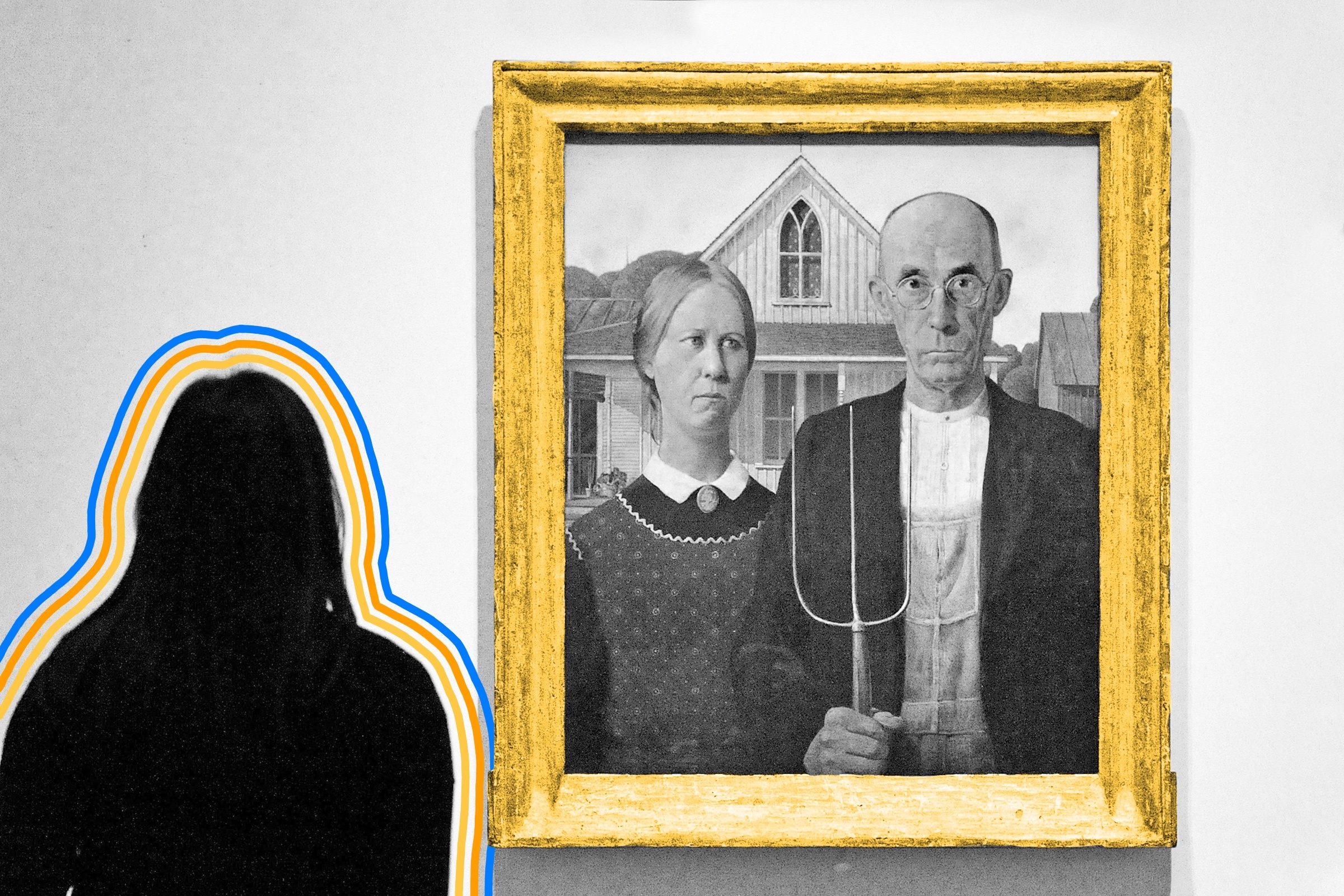
The models for the painting "American Gothic" were the artist's sister and dentist.
“American Gothic” is one of the most famous U.S. paintings of the 20th century, and one that nearly everyone — art aficionado or not — can recognize. The 1930 painting depicts a proud Iowan farmer and his relative (whether it’s meant to be his wife or daughter is up for debate) standing in front of their small farmhouse. While the house — along with its Carpenter Gothic window — is very much a real farmhouse in Eldon, Iowa (and still exists today), its famous occupants never lived in the home at all. In fact, they weren’t even farmers.
“I imagined American Gothic people with their faces stretched out long to go with this American Gothic house,” the painting’s artist, Grant Wood, once said. He found those long faces in his dentist, Byron McKeeby, and his own sister, Nan (though he painted her with a more elongated face). Wood modeled these elements separately, so the painting’s famous “farmers” never stood in front of the house. Today, some critics call Wood’s work America’s “Mona Lisa.” The painting is one of the most popular residents at the Art Institute of Chicago and remains a masterwork of American Regionalism, an art movement popular in the 1920s and ’30s that focused on realistic scenes of rural life in the U.S. heartland. Ironically enough, Wood’s painting helped make Eldon, Iowa, a little less rural — today, about 15,000 people from around the world come each year to see the Gothic house that started it all.
Not everyone has enjoyed “American Gothic,” including the very people it was meant to honor. When the painting appeared in the Cedar Rapids Gazette, many Iowan farmers saw it as a joke rather than a thoughtful homage. One Iowan even threatened that Wood should have his “head bashed in.” At the time, the U.S. was rapidly industrializing and the traditional farm was often a subject of commentary and satire. Even novelist Gertrude Stein assumed the painting was meant to deride rural life, calling it a “devastating satire.” (For his own part, Wood said, “There is satire in it, but only as there is satire in any realistic statement.”) But as the Great Depression wore on, the perception of Wood’s work transformed from a perceived country caricature to an image of resolute perseverance. In other words, “American Gothic” became an embodiment of the American spirit.

